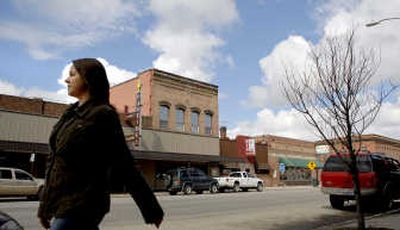Sandpoint vision

The vision calls for a pedestrian-friendly community, filled with bike paths, parks and stunning views of undeveloped areas surrounding town.
The draft plan is the product of more than a year of public input which involved numerous public meetings, outreach at shopping enters and the Bonner County Fair, said Laura Bry, a citizen member of the comprehensive plan steering committee.
It calls for developing more trails and adding public parks, creating pedestrian- and bike-friendly streets, providing housing for all income levels, mixing residential and commercial uses into mixed-use areas, promoting green development and making sure Sandpoint provides what residents need as well as what tourists want.
Those involved in the process say the plan is past due.
“The current plan is by all intents and purposes 25 years old,” said Rick Hastings, whose company Studio Cascade was contracted to work on the document.
Sandpoint Planning Director Jeremy Grimm said a final plan should be adopted by June.
“I really think the plan reflects the input the city got,” said Susan Drumheller, steering committee member and North Idaho associate for the Idaho Conservation League. “People really value the recreational and outdoorsy character of the area and want to protect that.”
To do that, the plan focuses on keeping growth contained within Sandpoint’s existing city limits as much as possible, preventing sprawl into the surrounding rural landscape.
Some say that the goal of reducing sprawl could come at the expense of established neighborhoods where the comprehensive plan envisions streets of single family homes being converted to townhouses, offices and retail stores.
“I don’t think they’re being realistic about what this community can handle without extending the city limits,” said Lucille Davis.
Davis said her neighborhood is slated in the plan for mixed-use development but that she would prefer it remain a strictly residential neighborhood.
Carol Camp has similar fears. She and her husband, Bob, started a grassroots group called Save Our Sandpoint to protect Sandpoint’s residential neighborhoods. The two live in a house that is more than 100 years old.
“As soon as businesses move into a neighborhood, the neighborhood tends to decline and you lose neighborhood character,” Camp said.
But Bry said that the comprehensive plan isn’t the same as zoning and doesn’t call for hard and fast land uses in exact locations. Instead she described it as a general blueprint for development that will be fine-tuned in later months through zoning and development regulations.
“The implementation is a totally separate deal,” Bry said.
That may be true, said Camp, but she added, “It’s not rezoning per se, however the planners have said rezoning follows the comp plan.”
Bry also pointed out that the plan is intended to guide Sandpoint development over the next 20 years. Changes to land use won’t happen overnight.
“Having the plan is considerably better than not having the plan,” Bry said. “We could be leaders in the west for a city this size with transportation and housing mixed income levels.”